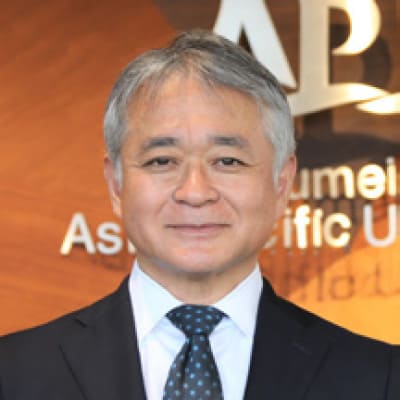Proposing Strategies in the Context of Asset Value Uncertainty
Categories:
Overview
Applying experience as a financial markets professional to academic research, proposing corporate strategies and policies to address asset price volatility
Financial markets are seeing an unparalleled rise in asset price volatility in the context of experimental monetary policies, such as the Bank of Japan’s unprecedented quantitative and qualitative monetary easing since 2013, as well as changes in the external environment including the pandemic and heightened geopolitical risk. As asset price formation mechanisms are altered fundamentally, and unpredictable, discontinuous asset price fluctuation becomes the norm, conventional analyses and responses predicated on market stability are limited in their usefulness. Business operators and policymakers need new understandings that transcend conventional frameworks, and adopt approaches based thereon. (see Figure 1).
For example, the quantitative and qualitative monetary easing policy adopted by the Bank of Japan to tackle deflation has taken more than 10 years to yield effects, but heightened uncertainty over the course of its outcomes, consequences, and policy adjustments (“normalization”) have had a significant impact on interest rates, foreign exchange rates, and other factors in asset price formation. By destabilizing the financial environment, increased asset price volatility has conversely diminished the policy’s ripple effects (see Figure 2).
In this research project, I, the principal investigator, am aiming to shed light on the mechanisms of asset price fluctuation in this new era and derive practical insights for business management and policymaking, deploying both theoretical research methods and my extensive professional experience with the Bank of Japan and foreign-owned investment banks. I plan to focus especially on the expansion of tail risk beyond conventional expectations, and the formulation of risk management plans to address such risk.


Novelty/Originality
Explicating the mechanisms of asset price fluctuation in policy management involving tail risk, including quantitative and qualitative monetary easing
There are three distinctive features of this research. The first is its integration of theoretical research with understandings of the market based on many years of professional experience. I had a professional career totaling approximately 45 years with the Bank of Japan, Goldman Sachs Japan, and Barclays Capital Japan. My experience and achievements in both the market and the policy sphere enable me to pursue more practical, multi-faceted market and policy analysis.
The second feature is the focus on discontinuous asset price fluctuation mechanisms and their feedback effects on policy management, in the context of quantitative and qualitative monetary easing policy. The research will apply both market experience and theoretical perspectives to a reassessment of market changes (rising asset price volatility rate) that are not adequately explained by the conventional framework, and offer a novel analytical approach.
The third feature is international comparative analysis. I have cultivated an international outlook over many years through roles including coordination of international conferences and other events at the Bank of Japan, and working as the head of pan-Asian economic research at Goldman Sachs Japan. Based on this outlook, I will focus on issues such as the international spread of the “Japanification” phenomenon (secular stagnation in the US, balance sheet adjustment and other aspects of structural deflation and ineffective monetary easing in China, etc.), and derive insights from policy responses and their consequences in major economies around the world.

Source: Justin B. Craig, Ken Moores (2017) Leading Family Business – Best Practices for Long-Term Stewardship. Praeger.
Principal Investigator

Ritsumeikan Asia Pacific University
You can view and print a summary of this page's contents in a single PDF page here.







Over many years of professional experience in the Bank of Japan and foreign-owned investment banks, I observed close-up many dramatic changes in financial markets, from the collapse of Japan’s bubble economy to financial crises, and the process from quantitative and qualitative monetary easing to normalization. The reason I moved into academia was because that the market is undergoing great changes and we are moving into a world where conventional theories and experiential norms carry little currency. In this context, I felt it was my mission to elevate my experience in theoretical terms and share it in the form of practical insights, as well as communicating it to the younger generation.
Through research that bridges theory and practice, I hope to gain an understanding of financial markets in the new era and explore more effective approaches to navigating them.
Ritsumeikan Asia Pacific University Faculty Information